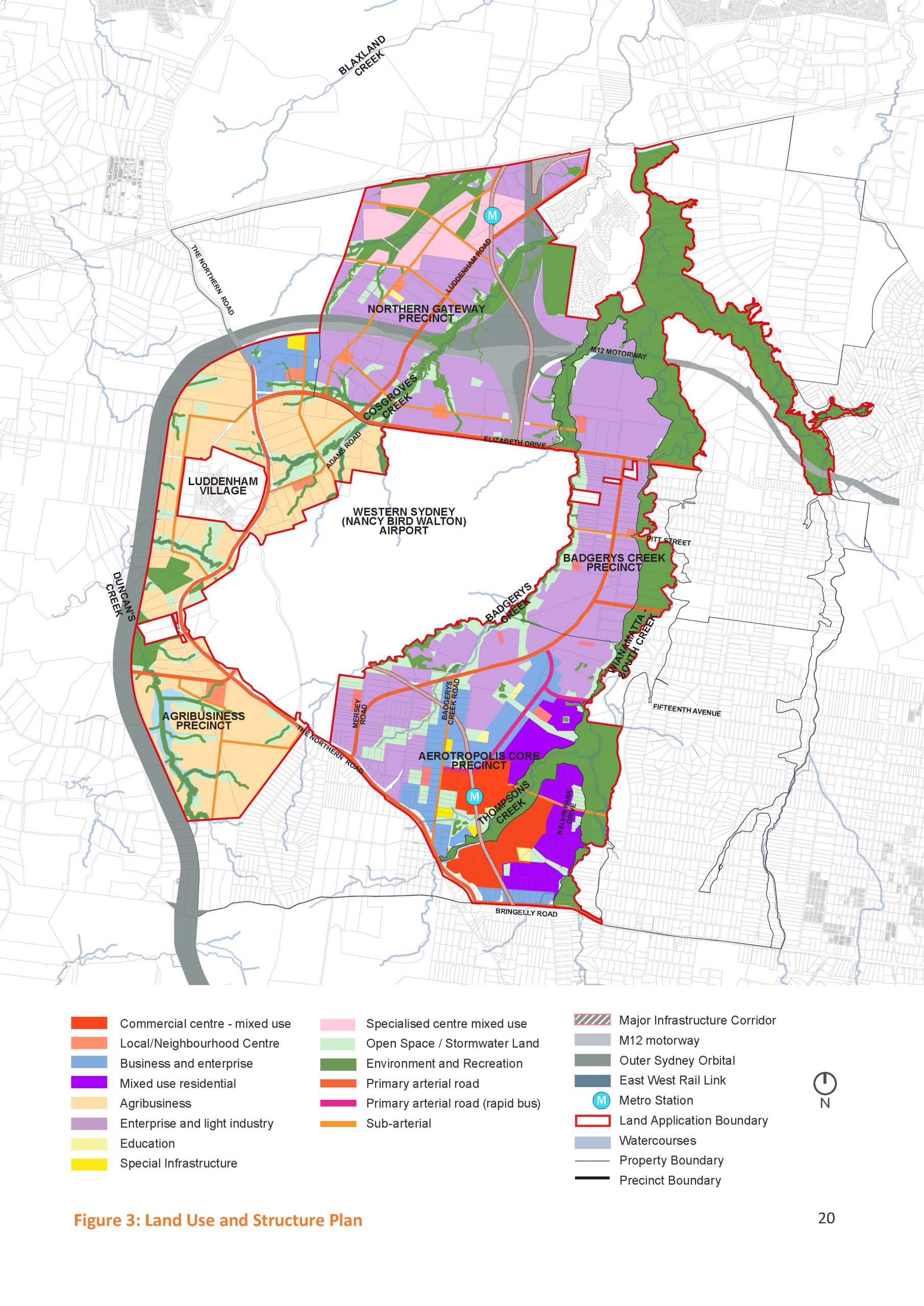As the property industry digests the new framework, we’ve analysed the most important changes that will affect development for the Aerotropolis.
The highly anticipated Aerotropolis Planning Framework was finalised on March 25 to deliver a new and economically powerful parkland city to leverage Western Sydney International Airport. With the promise of a ‘beyond business as usual’ landscape led approach, the revised package also seeks to connect with Country and strengthen existing natural systems. How will the new framework take these matters into account?
Since the announcement in 2015 of the intention to build a new international airport at Badgerys Creek, there has been a significant focus on the catalytic effect it would have on the region’s economic growth.
Urbis congratulates the NSW Government on this milestone. It’s a significant step in planning for the Aerotropolis and brings further certainty to the development industry and unlocks significant land to meet the future employment needs of Western Sydney.

